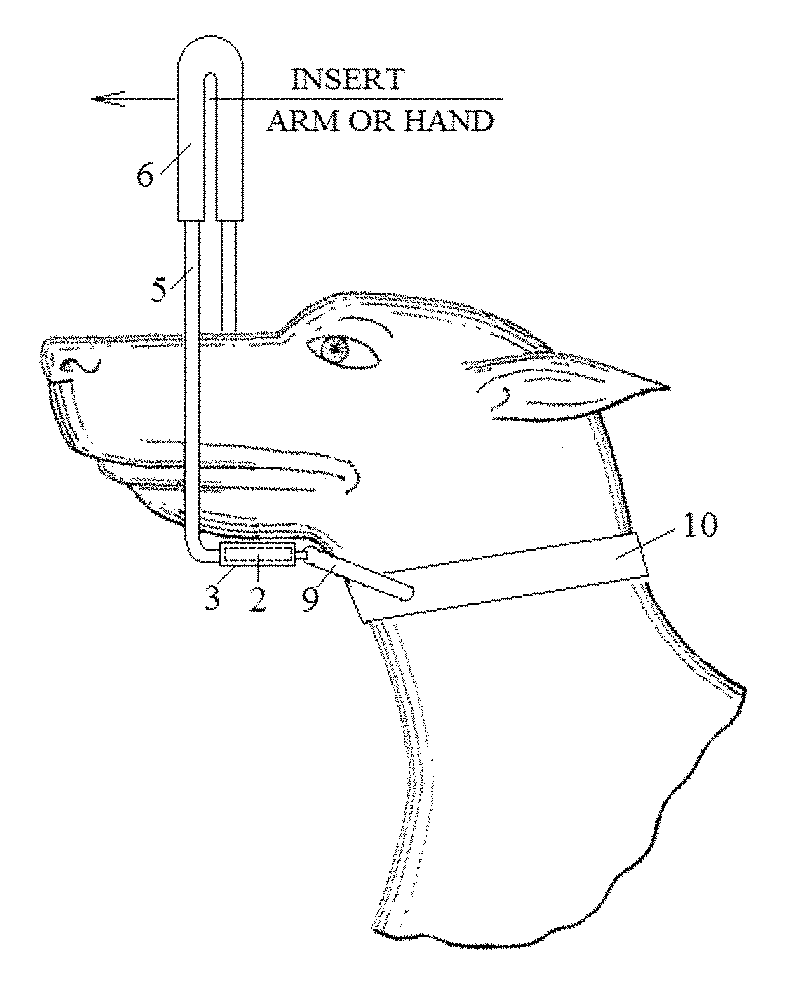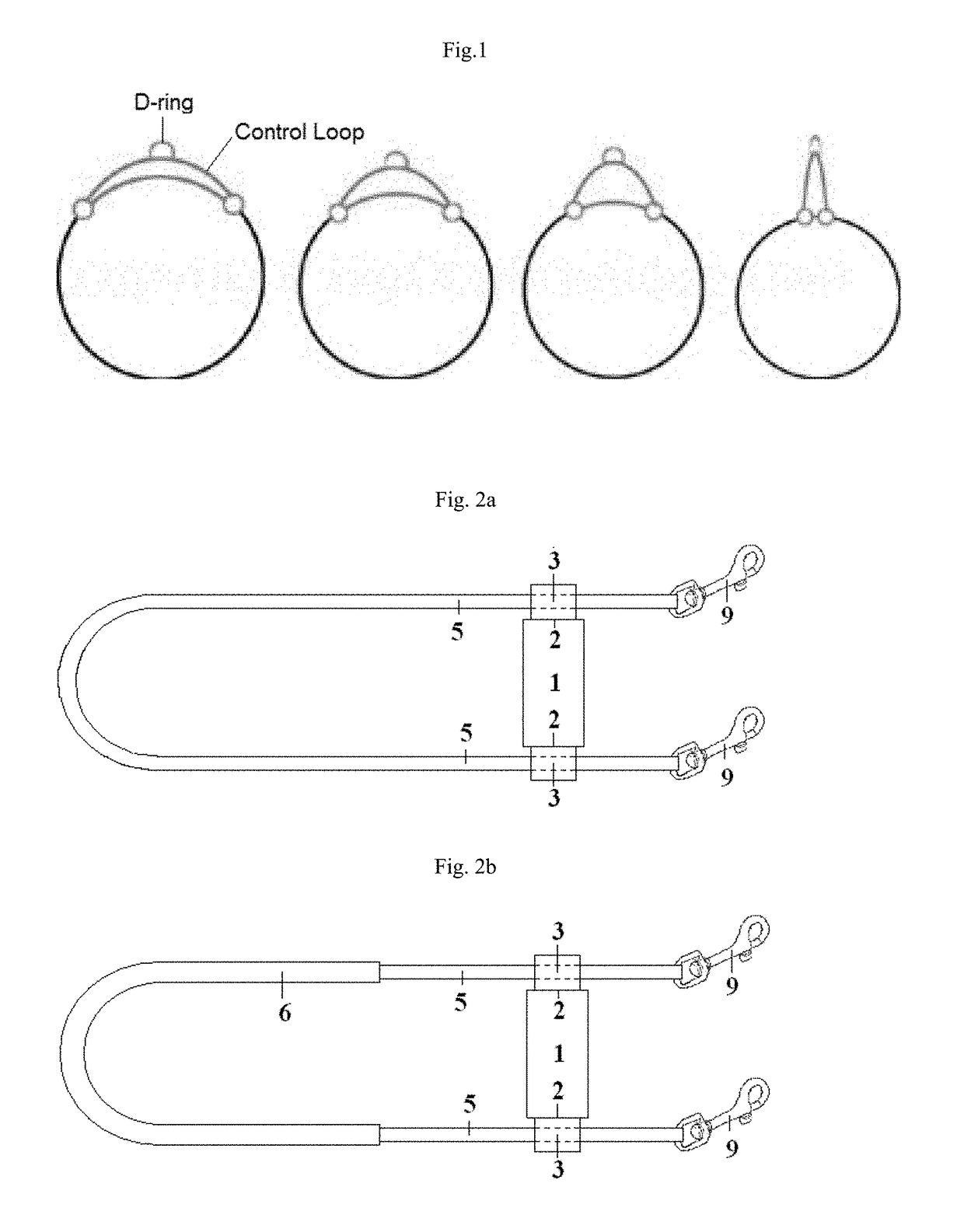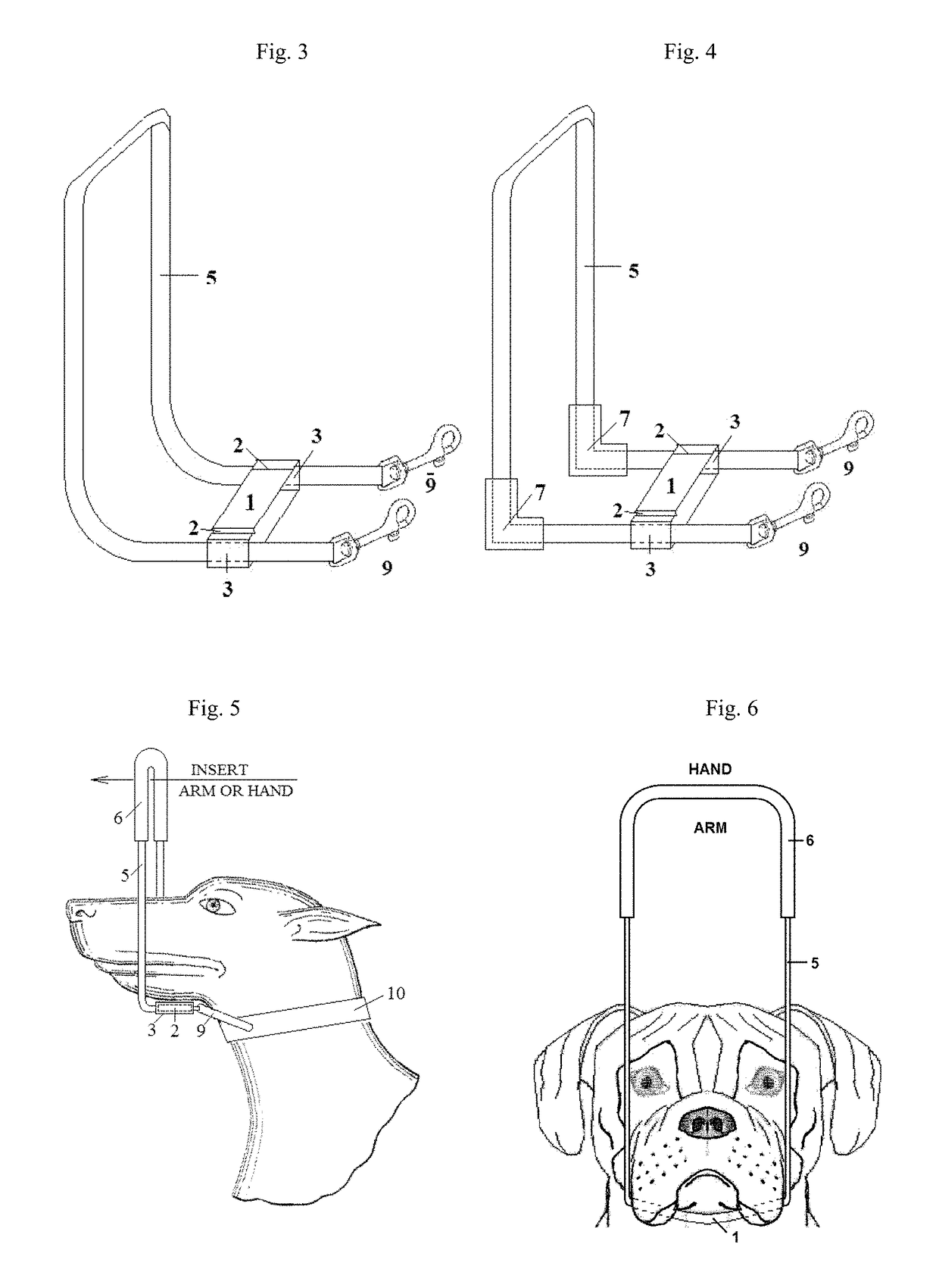Positive position training leashes and methods of using the leashes for training a dog
a technology of positive position and collar, which is applied in the field of leashes and methods of using leashes in teaching a dog, can solve the problems of severe tightening of the collar on the dog's, collar types that do not provide a way, and the level of discomfort and often some level of pain of the dog, and achieves the effect of positive reinforcemen
- Summary
- Abstract
- Description
- Claims
- Application Information
AI Technical Summary
Benefits of technology
Problems solved by technology
Method used
Image
Examples
Embodiment Construction
[0028]FIG. 2a shows an embodiment of a leash comprising a chin cradle (1) having two ends (2) and a guide (5), where each end (2) of the chin cradle (1) is connected to the guide (5) by a guide connection means (3), and the guide comprises two means (9) for connecting the guide to a collar (10). The leash shown in FIG. 2a is positioned flat, as on a table top.
[0029]The chin cradle (1) can be made from a variety of materials, including, but not limited to, leather, cloth (such as fleece, flannel, denim or twill), webbing and strapping. In some embodiments, the comfort chin sling comprises a stiffening means. Preferably the stiffening means comprises plastic, plastic mesh, metal, wire mesh, or reinforced fiberglass. The chin cradle (1) can further comprise one or more protrusions, such as bumps or ridges. The chin cradle (1) is preferably flexible. In some embodiments, the chin cradle (1) also has rigidity. The term rigidity, as used herein, means that the chin cradle remains in an ap...
PUM
 Login to View More
Login to View More Abstract
Description
Claims
Application Information
 Login to View More
Login to View More - R&D
- Intellectual Property
- Life Sciences
- Materials
- Tech Scout
- Unparalleled Data Quality
- Higher Quality Content
- 60% Fewer Hallucinations
Browse by: Latest US Patents, China's latest patents, Technical Efficacy Thesaurus, Application Domain, Technology Topic, Popular Technical Reports.
© 2025 PatSnap. All rights reserved.Legal|Privacy policy|Modern Slavery Act Transparency Statement|Sitemap|About US| Contact US: help@patsnap.com



